Well this project was a long time in coming. I hemmed and hawwed about it for a long time. Was it worth the trouble and expense? Did I really need the extra capacity?
I finally rationalized that it was. Effectively, replacing my two Group 31 AGM batteries, I'd go from 110 ah of usable capacity to 225 ah and save 80 pounds of weight. These new lithium ion batteries are actually LiFEPO4 batteries. There are many different types, but this is what is going in all the RV's currently and many electric cars. They are very safe for this use and are a different chemistry from the ones that caused fires in airliners and kid's hoverboards.
On my last battery project, I used the Smart Battery. I changed over to the Stark Battery for several reasons. First, the capacity is much higher - 125 ah compared to 100 ah. Second, they have a much more sophisticated BMS. Actually, the Smart Battery does not have a true BMS. This one has thermal protection (high temp), as well as voltage protection, and cell balancing. Third, the technology is different. They use prismatic cells as opposed to the cylindrical cells. All the batteries you'll find for RV application are prismatic. My understanding is that it's a simpler design and results in a smaller overall package. Fourth, and finally, the Stark battery is smaller and you can unscrew the top and get to the insides (the Smart Battery was sealed - you'd have to cut it open - yikes!). I thought this might be handy, if in the future I want to put a temperature sensor inside.
With all that said, here is what arrived on my doorstep via Fedex. It took 4 weeks from order to receiving my batteries. Apparently, they make the various sizes of batteries in batches, so if one batch is gone, you have to wait for the next. Turns out that bass fishermen love these things for their trolling motors - they were just cleaned out when I placed my order. Here's another thing I like about Stark - their battery came well packaged in an actual box. The Smart Battery came via a guy in a panel van - no box, no nothing. Just handed me the battery, there ya go buddy. Odd.
I like these Stark people. The are just up the road from me in Charlotte, NC.
This is the label sticker. Two things I think are in error. The weight is much less than 39 lbs - more like 32. Second is the initial charge. The resting voltage I measured was 13.4 volts. That's a LOT more than 70%.
This is first rate packaging. Lots of cushioning and room around the item in case the box gets beaten up - which one of mine was.
So, out to the shop and get this project going. First is to raise the van up on my home-made ramps to get the old batteries out. Love these ramps!
Here's one of the new batteries mounted to the slide-out tray. It's well secured with the bar, but you don't want to tighten it too much or you may crack the polystyrene case.
These shots I took to show the difference in size between the Group 31 and the Stark Battery. This will pay off later as I'll show you.
Side by side.
Inside the van (a Travato 59K), the converter/charger unit is located on a shelf under the curb-side bed. Two tricks to not making that alot of work - using a screw gun with a long shaft screw bit - and not removing the bed deck from the van or all the Froli springs. Just unscrew the deck, and slide it over until you uncover the converter.
Here's what you get from Winnebago these days - Progressive Dynamics PD9245C smart charger/converter. Uses 725 watts and 4.5 amps. You want to stick to these numbers so that you are not severely altering your electrical loads. Otherwise, you may see some undesireable behavior with the EMS. You could go over 30 amps under certain conditions and it will start shedding loads. Also, if you increase the charging amps, you may also need to upgrade the wiring - a much more involved project since these wires snake around the bowels of the van and out thru the bottom. I don't need such quick charging that I want to go to all that expense and trouble.
The wiring is really simple. Two leads for the batteries, and a ground wire.
This item I had left over from my last project - the Progressive Dynamics Lithium Converter Charger model 9145L. This is the same device you'd get in a Pleasureway Lexor with the new lithium setup. What's cool about this device, is that dimensionally it is exactly the same as the 9245 that came with my van. Also, all the wiring is the same, and the screw holes to mount it are the same as well. So this change out is about as easy as it gets. Also, since the electrical loads are the same, it will not effect my EMS.
Here it is mounted in place and ready to button it all back up.
Here she is under the van all mounted and secured. Note that there is room around these batteries. I think a project to install a temp sensor and insulate these batteries would be pretty easy so they could be used (charging) in cold weather (teens and twenties F). You could even fit heating pads, as there is so much room.
Another thing to consider, since these batteries are so small, if you were so inclined, I think the bracketry could be reconfigured to enable mounting 4 batteries. You have four large bolts hanging down from the floor of the van, sized to support two 76 lb batteries and the steel brackets. If you could have new brackets made, you could possibly mount four of these batteries in this space.
Currently, I'm not using an inverter, so I'm undecided if I would want to go that far. Something to think about in the fall I guess.

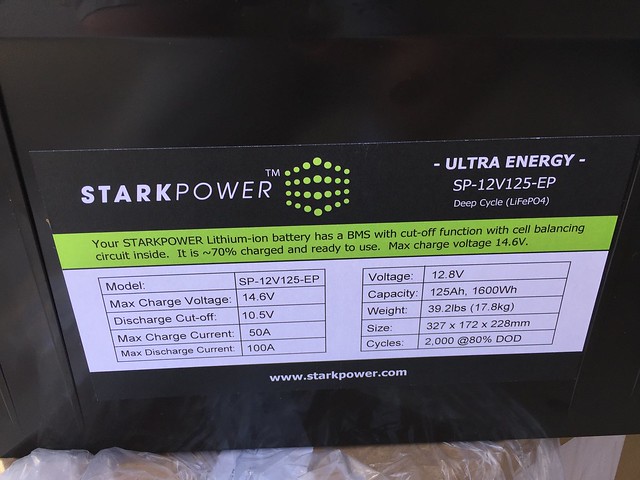

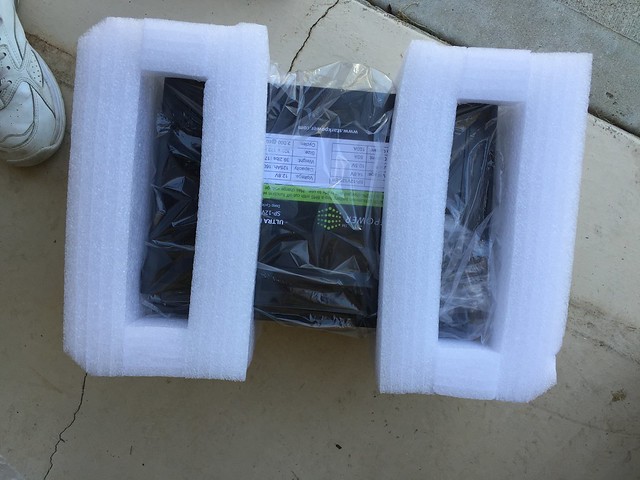
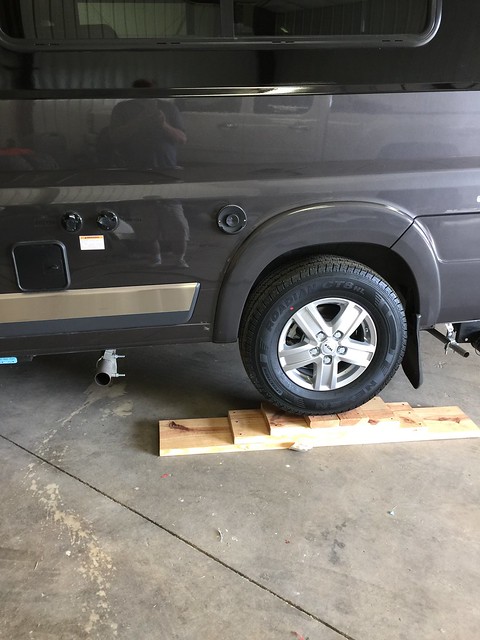
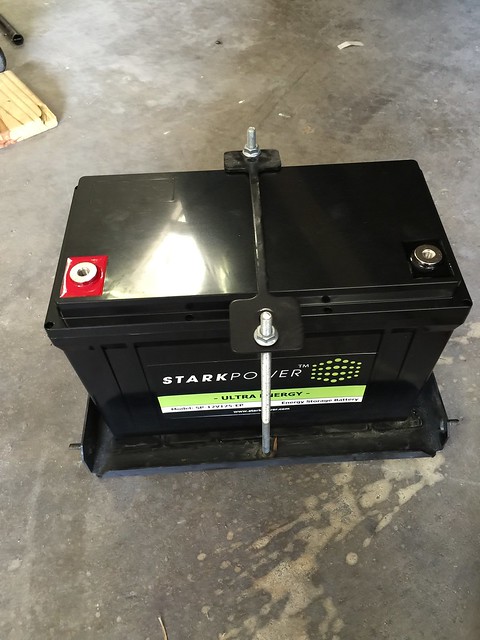

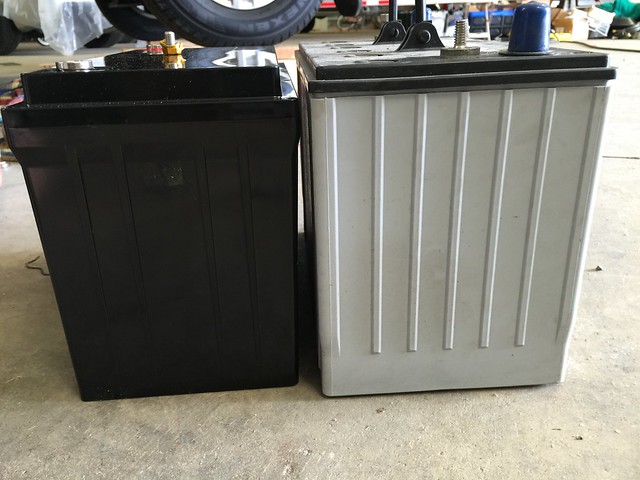

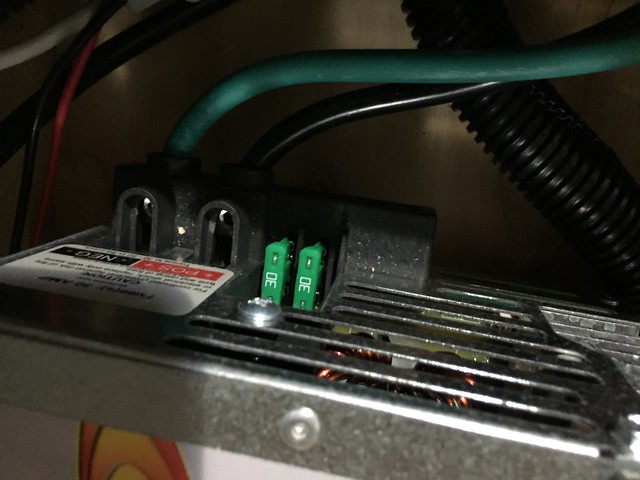
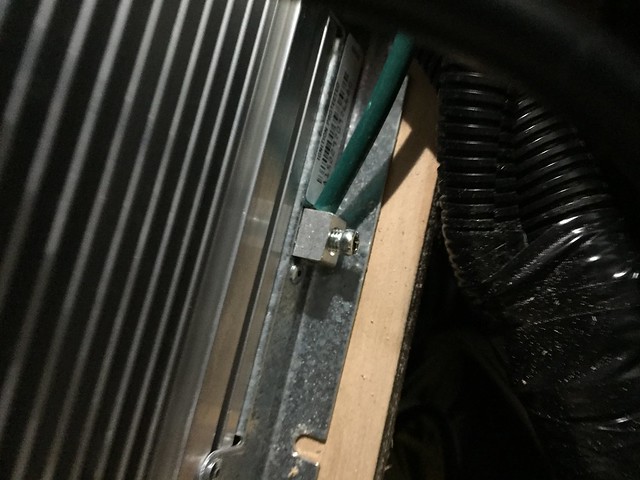
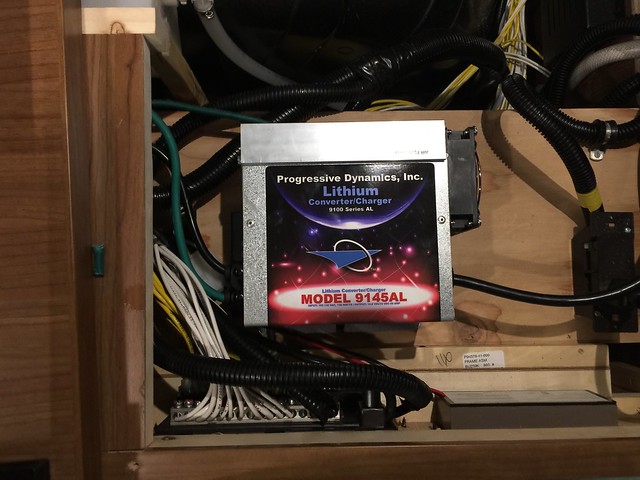
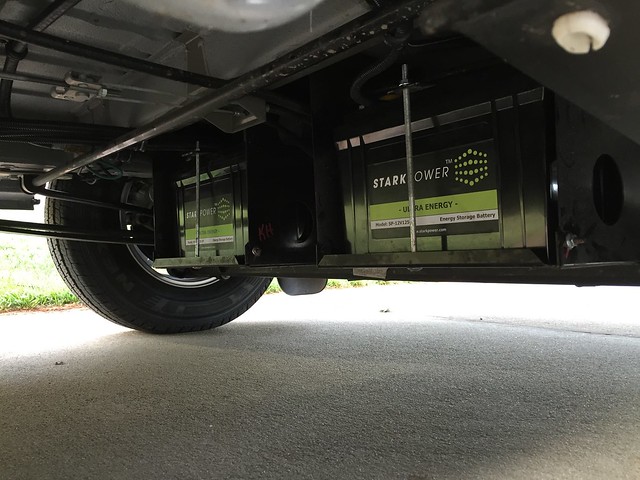
Nice setup! I'm in the early stages of buying the components for a portable solar/battery charging system to use for camping or home emergency. I want to go with LiFePO4 batteries but there is not a whole heck of allot of reviews on these things. I'm planning on mounting them in hard-sided Pelican cases, along with the various inverters and charge controllers.
ReplyDeleteI looked into the "drop-in" batteries like Smart and Stark along with CALB battery packs. There are a couple companies that will band together battery cells to make whatever final battery voltage/amps you need.
Just trying to find out what company is really good and what ones are not good. From what I read the CALB cells are one of the better ones. Although I like the idea of a drop-in battery pack better. I'll look forward to any updates you may have on the Stark system. It looks very promising. Thanks for the warning/update on Smart batteries too.
Hi,
ReplyDeleteI live a few miles from Stark and have been to the site to visit. Martin does everything top shelf Quailty.
You should stop by sometime and check them out. I tell them they have a Niche Market with the RV crowd and Martin is very interested in what do we want and can do it for us and if it makes business sense to do it.
So Feedback is great for him!
FYI:
I have the 100AH Stark I bought to play with on a Class B Coach House.
I used a computer load tester ( the same one Stark uses) to verify the characteristics of the battery…does it really put out 100AH? Wow! It will drain it 100AH @ 11.50 vdc and shut off. 100% useable 100AH. The BMS turns off the battery before you can kill it.
My background is Electrical/Electronic so I am comfortable about changing over the electrical.
Here is what I have been testing out:
1. Stark 100AH battery
2. Go Solar 100 watt solar panel.
3. Progressive Lithium 45 Amp charger.
4. Trimetric TM-2030-RV Battery monitor system
5. Bogart Engineeringsc-2030 charge controller
So far everything is working as planned. I am doing a real world load usage test versus battery recharge time to decide if I want to add another 100 watts for faster recharge without generator assist.
Let me know if you want any help with your Battery setup, glad to come over and help. And no it will not cost anything! I find this fun to do as a learning hobby and exercising the brain synapse!
Tom.
Thanks, Tom. Please share my blog with Martin, he might get a kick out of it.
DeleteOne thing I'd like to see them do is put in a low-temp charging cut-off. You don't want to charge these batteries below freezing. My plans for these batteries is to only draw them down to 10%, just for longevity reasons. - Ron
Ron,
ReplyDeleteSorry if I missed this in a post of even in this thread. I know you have a 59K. We have the 59G and want to add an additional battery. I notice you have battery hangers for the two new batteries. Could you share where you got those and do you have any insights as to issues with adding a second battery to the 59G chassis?
Thanks
Bruce
Thought I have posted here this morning but don't see it...
ReplyDeleteRon - I looking to install an additional battery on our G. Mostly will replace the old battery with a twin pair similar to yours. Are you aware of difficulties adding an additional battery to a G? Could you point me to where you ordered the battery hanger?
I didn't see this info in your post but could have missed it :-(
Bruce DaCosta
Posts are moderated - I hadn't cleared that one to publish as I was busy.
DeleteWith the 2016 model, both the G and the K come with 2 batteries as standard. You could order these brackets from Winnebago, but the bolts they hang from go thru the floor of the van - the heads are up under the flooring and I believe welded in. You might be able to drill some self-tapping bolts, but be very careful as there is wiring and plumbing up above.
If you decide to go lithium, a single battery has the capacity of 2 AGM's - so just replacing your single may be good enough - go back in my blog to summer of 2015 and see the project I did with the Smart Battery on my old G.
Thanks Much...
ReplyDeleteAny thoughts or concerns with welding a bracket to the chassis?
ReplyDeleteDo you charge your Stark batteries from the engine alternator? If so, how do you handle the connection to the alternator? A voltage sensing relay?
ReplyDeleteThanks for the reply,
Tom
I am sure I have missed an obvious queue either at the Progressive Dynamics web site or perhaps your blog but can you clarify the difference between the PD9145AL versus the PD9245C? I am pretty sure the answer is that the 9200 series is appropriate for the AGM/gell cell and probably standard Lead Acid batteries and the 9100 series are specifically for the very specific charging method for Lithium batteries. Can you comment on this? I could ask PD the same but since your application is Travato specific (I about to buy a 59K, I figured your the guy.
ReplyDeleteThank you for this post! I'm new to the RV living. I'm a college student and support myself fully financially amd so all my savings from working have been going into making my bus conversion more efficient with solar and replacing the golf batteries my bf and I had purchased... I've been contemplating about where to purchase lithium-ion lifepo4 batteries.
ReplyDeleteI must say Stark is $100 cheaper than the Battle born batteries I was looking at. If its as good as you say it is, then i think it may be worth a try plus it does have a 2 year warranty, which is great.